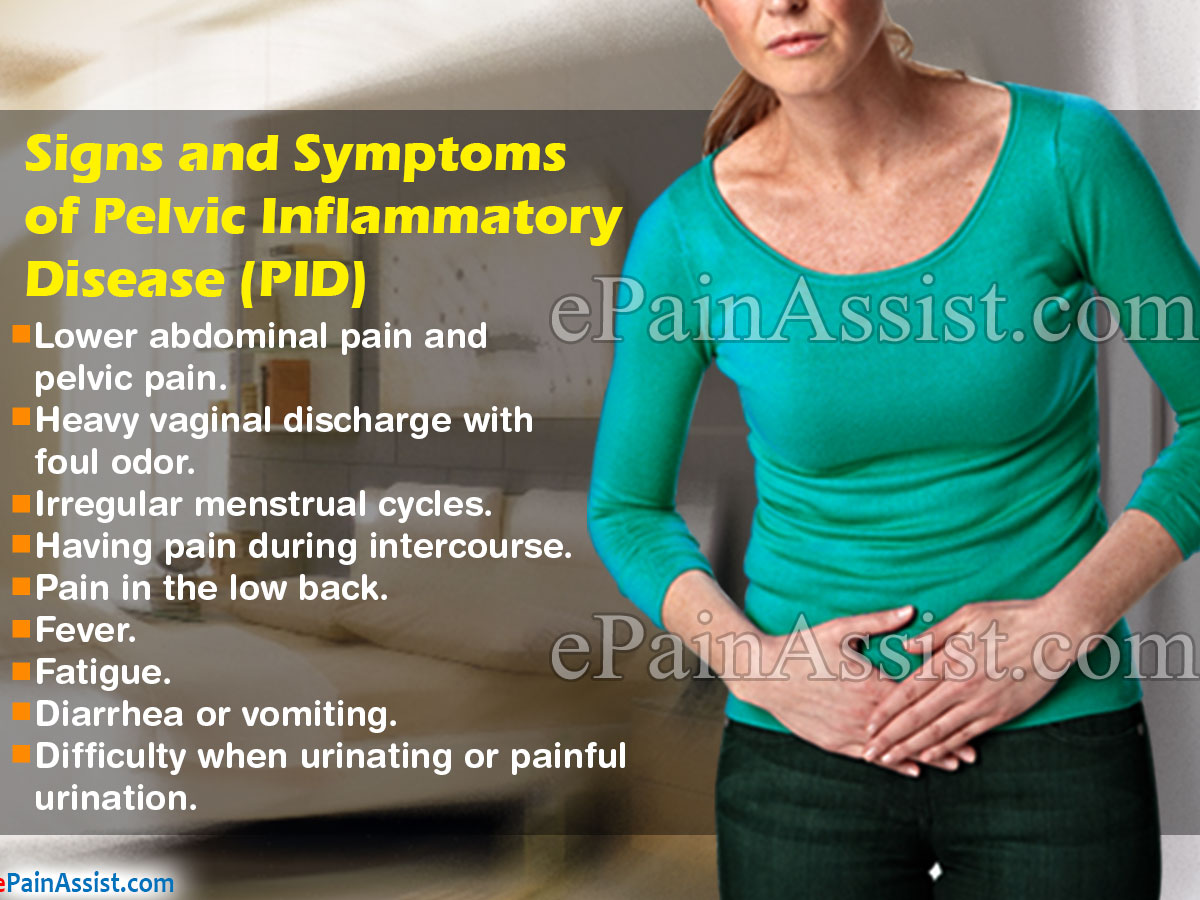Infection of the female reproductive organs is known as pelvic inflammatory disease (PID).[1] PID commonly occurs when sexually transmitted bacteria multiply and extend from the vagina towards the uterus and upper genital tract. Many women suffering from pelvic inflammatory disease or PID may have no signs or symptoms and don’t seek any treatment. The first indications of pelvic inflammatory disease are when a patient suffers from chronic pelvic pain or has problems getting pregnant and this is when the pelvic inflammatory disease is detected. Complications of pelvic inflammatory disease include: Ectopic pregnancy, infertility, and chronic pelvic pain. Treatment for PID comprises of oral and I.V. antibiotics and rarely surgery.

Causes of Pelvic Inflammatory Disease (PID)[2]
- Unsafe or unprotected sex with one or more than one partners can cause PID.
- Certain contraceptive devices such as intrauterine device (IUD) may increase the risk of developing PID.
- Other conditions where the bacteria can enter the reproductive tract are insertion of IUD, miscarriage, abortion, childbirth or endometrial biopsy.
Risk Factors for Pelvic Inflammatory Disease (PID)
- Females who are sexually active and younger than 25 years.
- Having more than one sexual partner.
- Having a sexual relationship with a person who has multiple sexual partners.
- Unprotected sex.
- Recent insertion of an IUD.
- Frequent douching.
- Previous history of pelvic inflammatory disease or other sexually transmitted infections.
Signs and Symptoms of Pelvic Inflammatory Disease (PID)[3]

Patients suffering from PID may only have mild signs and symptoms or no symptoms whatsoever. Asymptomatic PID is often seen where the infection results from chlamydia. Other common symptoms of PID include:
- Lower abdominal pain and pelvic pain.
- Heavy vaginal discharge with foul odor.
- Irregular menstrual cycles.
- Having pain during intercourse.
- Pain in the low back.
- Fever.
- Fatigue.
- Diarrhea or vomiting.
- Difficulty when urinating or painful urination.
Serious symptoms of PID requiring prompt medical attention include:
- Acute or intense pain in the lower abdomen.
- Vomiting.
- Symptoms of shock, such as fainting.
- High fever, (temperature higher than 101 F (38.3 C))
Test to Diagnose Pelvic Inflammatory Disease (PID)
- Medical history and physical exam.
- Pelvic exam.
- Analysis of vaginal discharge and cervical cultures.
- Urine tests.
- Pelvic ultrasound.
- Endometrial biopsy.
- Laparoscopy.
Treatment for Pelvic Inflammatory Disease (PID)[4]
- Antibiotics are the usual choice of treatment for PID. A combination of antibiotics may be prescribed initially before the lab results are known. After the results are known, the antibiotics are adjusted accordingly.
- Bed rest is recommended if the patient is suffering from PID.
- Pain relieving medications may also be prescribed to alleviate pain due to PID.
- For preventing re-infection, it is recommended that the sexual partner of the patient also be examined and treated.
- Sexual intercourse should be avoided till the treatment of PID is completed and tests show that the infection has been eliminated in all partners.
- For serious cases, such as if the patient is very ill, pregnant or HIV-positive, or if the patient has not responded to oral medications, then hospitalization is required. Intravenous (I.V.) antibiotics are given followed by oral antibiotics.
- Surgery is rarely required; however, if there is an indication of rupturing of an abscess or if it ruptures, then the doctor may drain the abscess. Surgery is also done on women who aren’t responding to treatment or who have an uncertain diagnosis of PID. Due to the risks of surgery, antibiotics are given before the surgery.
Prevention of Pelvic Inflammatory Disease (PID)[5]
- Always practice safe sex.
- Get yourself tested regularly.
- It is highly recommended that your partner is also tested.
- Avoid douching, as it upsets the balance of bacteria in the vagina.
- Good and proper hygiene habits should be maintained, such as wiping from front to back after urinating or defecating, so that the risk of bacteria entering into the vagina is reduced.
